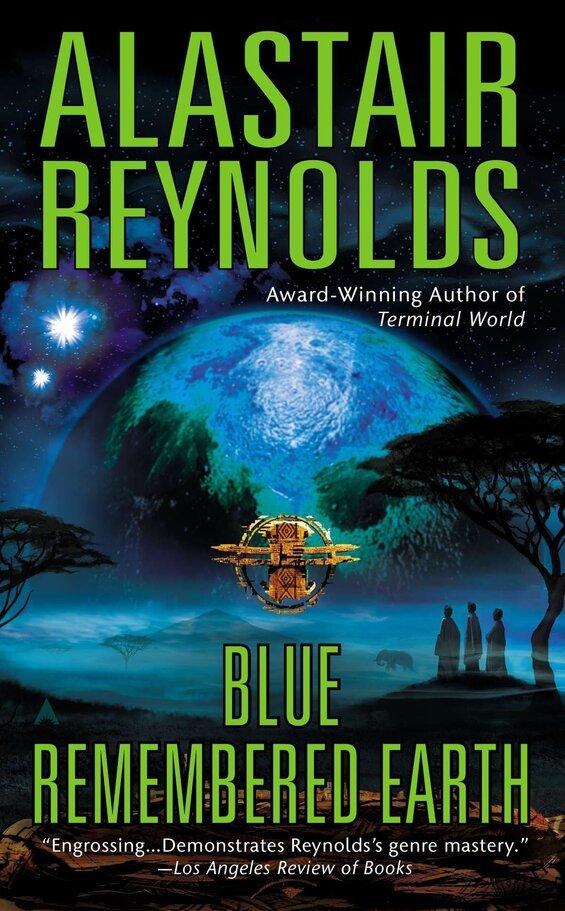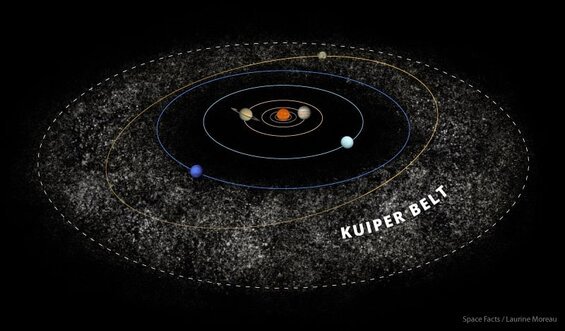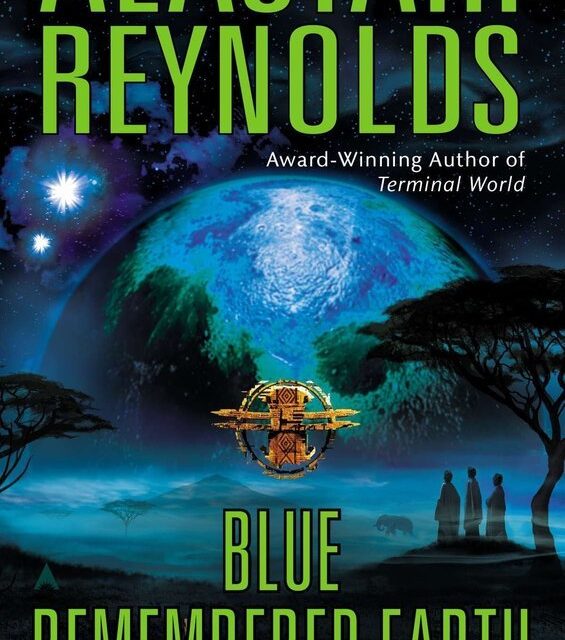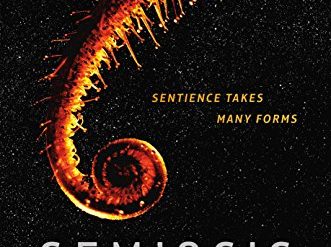
Most of us who are more than fifty years old tend to look on today’s digital technology with a mixture of puzzlement and dread. But it seems unlikely anyone now living would be comfortable in the world of 2162 portrayed in Alastair Reynolds’ novel, Blue Remembered Earth. While the title suggests the topic might be interplanetary travel, in reality it’s the lived experience of the story’s characters that is the true subject. And they live in a society that is all but unrecognizable to us today.
Everything seems normal in this dizzying future world
Science fiction writers typically imagine the future as if current trends in science, technology, and social dynamics continue indefinitely, with a few wild cards thrown in. That’s Reynolds’ approach in this novel. In the world he imagines in 2162, interplanetary travel is routine. So are now-unforeseeable advances in virtual reality, nanotechnology, genetic engineering, neural implants, artificial intelligence, robotics, surveillance systems, and the global balance of power. Other writers might view the result as dystopian. But in Blue Remembered Earth, the characters go about their lives as though everything’s normal. A few rebel. But just a few.
Blue Remembered Earth (Poseidon’s Children #1 of 3) by Alastair Reynolds (2012) 510 pages ★★★★☆

Virtual reality governs human affairs
All but handfuls of the eleven billion human beings alive in 2162 live in the Surveilled State under the ever-intrusive eye of The Mechanism. Most remain on Earth, but large colonies thrive underground on the the Moon and Mars, smaller ones on Titan and other moons of the gas giants as well as the asteroids. Humanity’s reach has extended to the Kuiper Belt, where large-scale mining operations have been underway for a century. The power of the Mechanism extends throughout the solar system. Mandatory Enhancements to the brain permit human beings to project themselves through various forms of virtual reality across vast distances. They manifest through “golems” and “claybots,” both of which are physically present, and “figments,” which are not, to conduct long-distance conversations by thought alone. And the Enhancements dampen physical aggression, making not just murder but nearly all forms of crime impossible. The Mechanism simply doesn’t tolerate violence.
Africa is in the ascendancy and dominates interplanetary travel
On Earth, and throughout much of the solar system, the dominant power is Africa, which has surpassed China and India in large part through the entrepreneurial gifts of the Akinya family. African, Chinese, and Indian companies manage most of the action in space. Europe is mentioned only in passing, with a reference to the continuing strength of the euro. The United States doesn’t enter the picture at all.
An interplanetary treasure hunt
Geoffrey Akinya and his sister Sunday are the family’s black sheep. Neither has consented to enter the executive ranks of the family’s massive business. Their cousins, Hector and Lucas, serve as what we might call co-CEOs, working from the family household in the former Tanzania. But it’s their grandmother, Eunice, who is the head of the matriarchal family.
Geoffrey is a biologist studying elephant cognition among one of the herds in the Amboseli in what is today Kenya. Sunday is an artist who lives and works in a community on the Moon that lies outside the control of the Mechanism. Grandmother Eunice continues to speak for the family, but she has not visited Earth or any of the other inhabited colonies elsewhere in the solar system for sixty years. She lives in self-imposed exile in the space station Winter Palace, in lunar orbit.
The matriarch’s death triggers the hunt
Eunice’s death at the age of 130 sets off the action. Hector and Lucas are concerned that the old lady’s reasons for her exile may obscure a secret that threatens the company. They bribe Geoffrey to travel to the Moon with a promise of generous funding for his work with the elephants. There, on the pretext of visiting his sister, he opens a safe deposit box in a bank vault. But there are no papers in the vault, simply an old spacesuit glove that Eunice has left there. It’s a clue—the first in a series of baffling objects from Eunice’s past that will take Geoffrey and Sunday from the surface of the Moon to Mars and the outer reaches of the solar system. At the end of this interplanetary treasure hunt is, they hope, the answer to the great secret of Eunice’s life.
Blue Remembered Earth is the first book of the Poseidon’s Children trilogy.
About the author

Alastair Reynolds was born in Wales in 1966 and lives there now in Cardiff. After more than a decade working for the European Space Agency in the Netherlands, he turned to full-time writing. His experience there, and his PhD in astrophysics, influence the hard science fiction he specializes in. He is best known for the seven novels in his Revelation Space Universe but has written a dozen other science fiction novels, including the three in the Poseidon’s Children trilogy.
For more reading
For more good reading, check out:
- The ultimate guide to the all-time best science fiction novels
- Great sci-fi novels reviewed: my top 10 (plus 100 runners-up)
- The five best First Contact novels
- Seven new science fiction authors worth reading
- The top 10 dystopian novels reviewed here
And you can always find my most popular reviews, and the most recent ones, plus a guide to this whole site, on the Home Page.


























